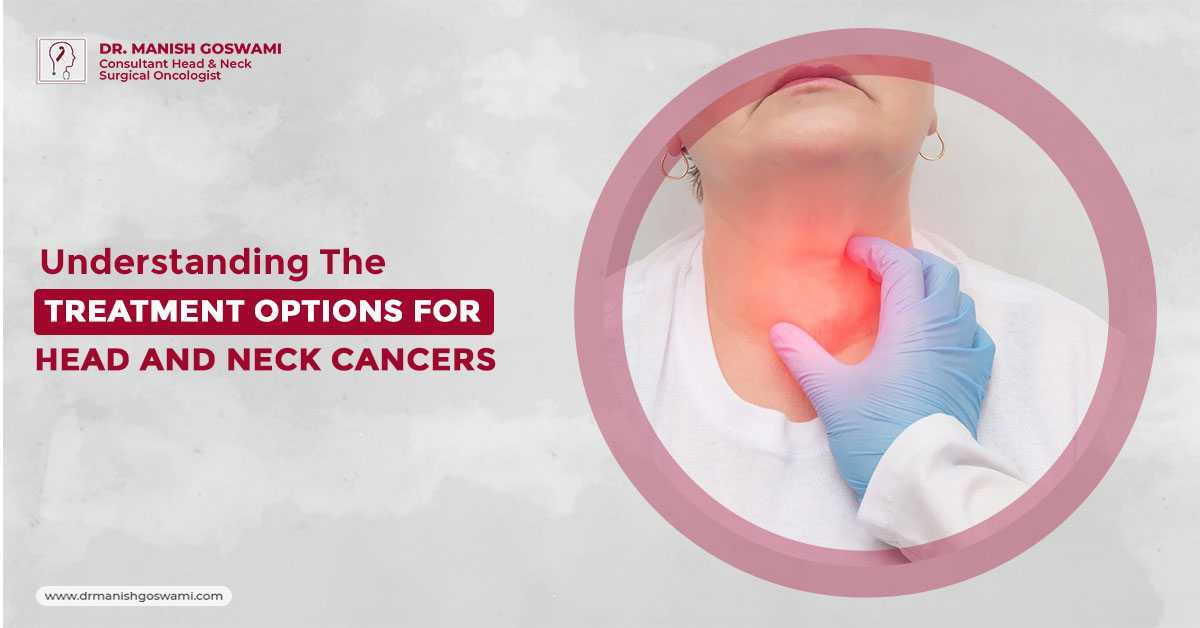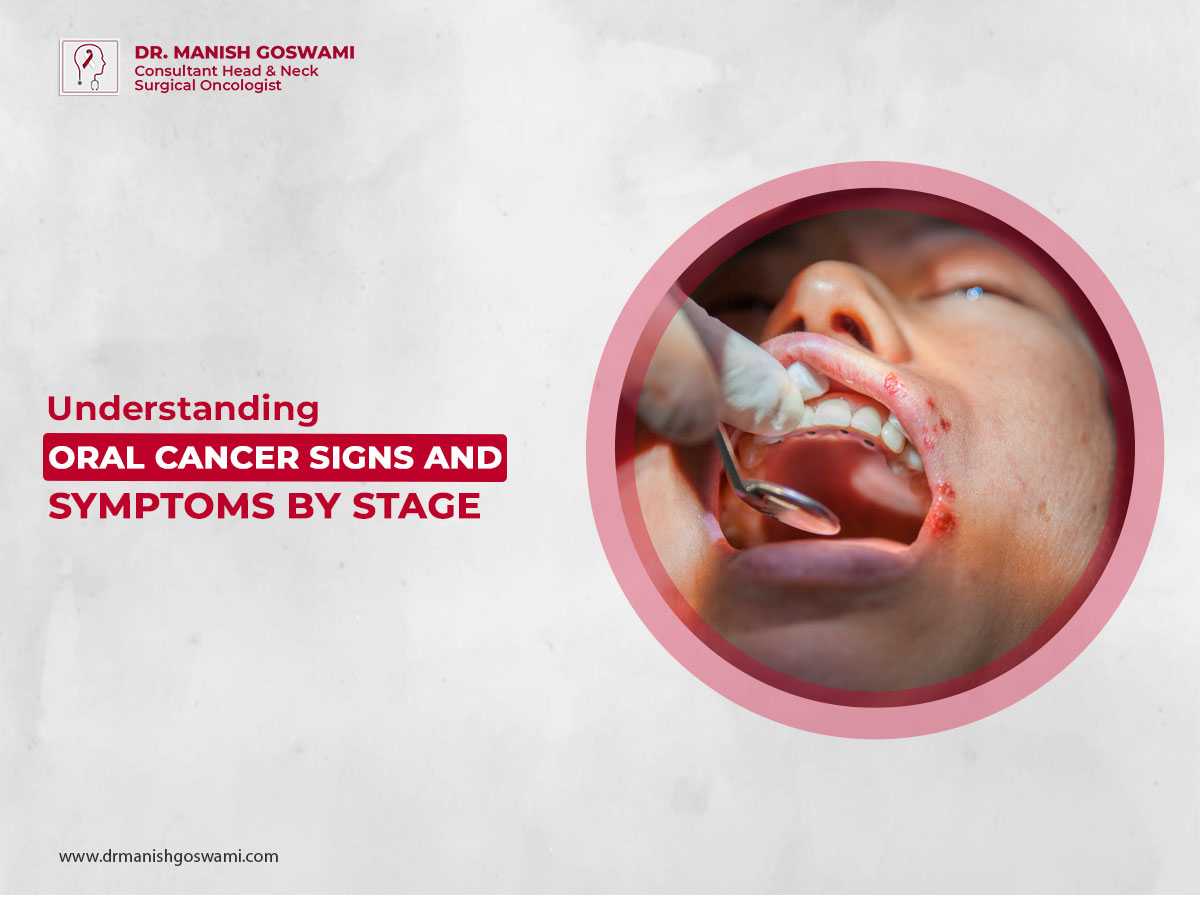Oral cancer falls in the category of head and neck cancer, and smoking, alcohol, HPV, and family history are the major risk factors for oral cancer. This type of cancer affects the areas of the lips, the floor of the mouth, the inner lining of the cheeks, the roof of the mouth, the gums, the tongue, and the part behind the wisdom teeth.
If any white patches or sores bleed inside the mouth, you shouldn’t ignore them, especially if these are ongoing. Consulting the leading oncologist near Siliguri for oral cancer treatment may be of great help. Without diagnosis and treatment, oral cancer has the potential to spread to other parts of the head and neck from the mouth and throat.
A Guide to Oral Cancer Symptoms in Different Stages
The squamous cells in your mouth cavity are where oral cancer begins. These thin, flat cells border the inside of the mouth and the lips. Here, diagnostic tests aid in examining the stage of oral cancer. A cancer stage indicates where a cancer is located and if it has spread or invaded the surrounding tissue.
Mouth cancer may appear as white patches or bleeding sores, which are frequent issues with the mouth or lips. Your healthcare provider may check around your mouth during a physical examinationbesides examining the insideof your mouth. Your doctor will check for any indications of cancer or precancerous growths.
More anatomical signs, such as a lesion within the cheek or a white patch on the gums, are typically seen in the early stages of oral cancer. However, when oral cancer progresses, noticeable signs include slurred speech, difficulty eating, and loose teeth that can make chewing challenging, along with pain.
To analyze cells for cancer, your doctor may order a biopsy. A medical practitioner may remove part of the tissue with a cutting instrument to perform a mouth cancer biopsy. The tissue is now examined in the lab for signs of cancerous cells. Changes in the DNA within the cancer cells may be the focus of further testing.
Pre-cancerous and Stage
Oral lesions that are premalignant or precancerous (sometimes called "potentially malignant") affect the epithelium, the skin lining the mouth.The tongue, inside of the cheek, gums, or floor of the mouth can all develop leukoplakia, an abnormal white or grey patch. Leukoplakiadoesn’t always indicate malignancy.
When a tumour is at Stage I, it is less than 2 cm and has not spread to adjacent tissues or lymph nodes.
Stage I Oral Cancer Common Symptoms and Signs:
- A mouth sore that stays even after two weeks.
- A little but obvious bump or thickening in the tongue or cheek.
- Little discomfort or pain when speaking or eating.
- The thickness of the inner cheek lining, or buccal mucosa.
- Patches that are red and white, called erythroleukoplakia
You should see a healthcare professional if a mouth sore or lump doesn't go away after a few weeks.
Stage II OralCancer Common Symptoms and Signs:
Although the tumor is now larger—between 2 and 4 centimeters—no neighboring lymph nodes have been affected.
- Prominent jaw or mouth swelling.
- Inability to move the tongue and the jaw area.
- A sensation of having something stuck in your throat and slurred mouth.
- Painful experience or a burning feeling in the mouth.
- Poorly fitted dentures.
You may also notice changes in speech, a chronic painful throat, or a hoarse voice.
Stage IIIOralCancer Common Symptoms and Signs:
Cancer that is greater than 4 centimeters or that has progressed to a neck lymph node is referred to be stage III mouth cancer.
- Chronic ear discomfort that isn't caused by an infection.
- Tongue, lip, or chin numbness.
- Visible neck mass or tumours.
- Enhanced exhaustion or inexplicable weight loss.
- Chewing or swallowing difficulties.
Swelling or a lump (that doesn’t go away) in the neck region may be signs of lymph node involvement, which might be a sign that the cancer is progressing.
Stage IVOralCancer Common Symptoms and Signs:
Oral cancer starts to impact important nerves if it has progressed to a point where the tumor has moved beyond its original site (in stage IV oral cancer).
- Intense pain in the neck, face, or mouth,
- Massive oral tumors.
- Breathing or speaking.
- Bleeding or bad breath coming from the mouth.
- Loose teeth and facial deformity.
- Swelling of the jaw bone
- Swollen tongue
The importance of accurate diagnosis is key to optimal recovery and management. Routine dental examinations may be extremely important for the early detection of oral health issues, including cancer, particularly if you use alcohol or tobacco. For effective oral cancer treatment, you might visit the top oncologist near Siliguri, Dr. Manish Goswami. Consult today.






